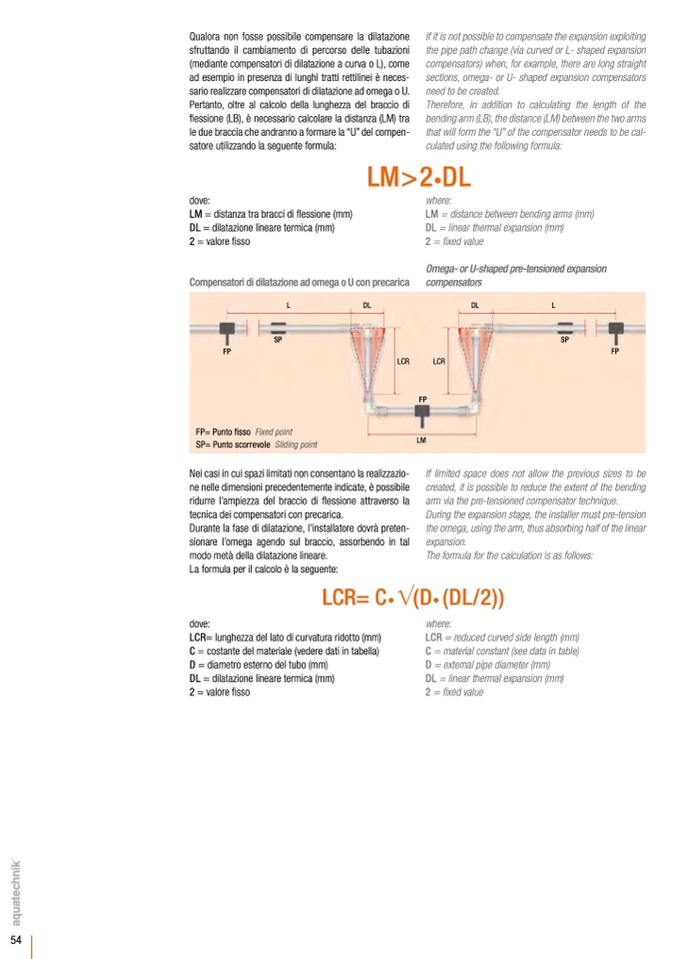
Qualora non fosse possibile compensare la dilatazione
sfruttando il cambiamento di percorso delle tubazioni
(mediante compensatori di dilatazione a curva o L), come
ad esempio in presenza di lunghi tratti rettilinei è neces-
sario realizzare compensatori di dilatazione ad omega o U.
Pertanto, oltre al calcolo della lunghezza del braccio di
flessione (LB), è necessario calcolare la distanza (LM) tra
le due braccia che andranno a formare la “U” del compen-
satore utilizzando la seguente formula:
If it is not possible to compensate the expansion exploiting
the pipe path change (via curved or L- shaped expansion
compensators) when, for example, there are long straight
sections, omega- or U- shaped expansion compensators
need to be created.
Therefore, in addition to calculating the length of the
bending arm (LB), the distance (LM) between the two arms
that will form the “U” of the compensator needs to be cal-
culated using the following formula:
dove:
LM = distanza tra bracci di flessione (mm)
DL = dilatazione lineare termica (mm)
2 = valore fisso
Compensatori di dilatazione ad omega o U con precarica
where:
LM = distance between bending arms (mm)
DL = linear thermal expansion (mm)
2 = fixed value
Omega- or U-shaped pre-tensioned expansion
compensators
LM>2
•
DL
L
DL
DL
L
SP
FP
FP= Punto fisso Fixed point
SP= Punto scorrevole Sliding point
SP
FP
LCR
LCR
FP
LM
Nei casi in cui spazi limitati non consentano la realizzazio-
ne nelle dimensioni precedentemente indicate, è possibile
ridurre l’ampiezza del braccio di flessione attraverso la
tecnica dei compensatori con precarica.
Durante la fase di dilatazione, l’installatore dovrà preten-
sionare l’omega agendo sul braccio, assorbendo in tal
modo metà della dilatazione lineare.
La formula per il calcolo è la seguente:
If limited space does not allow the previous sizes to be
created, it is possible to reduce the extent of the bending
arm via the pre-tensioned compensator technique.
During the expansion stage, the installer must pre-tension
the omega, using the arm, thus absorbing half of the linear
expansion.
The formula for the calculation is as follows:
dove:
LCR= lunghezza del lato di curvatura ridotto (mm)
C = costante del materiale (vedere dati in tabella)
D = diametro esterno del tubo (mm)
DL = dilatazione lineare termica (mm)
2 = valore fisso
where:
LCR = reduced curved side length (mm)
C = material constant (see data in table)
D = external pipe diameter (mm)
DL = linear thermal expansion (mm)
2 = fixed value
LCR= C
•
(D
•
(DL/2))
54

